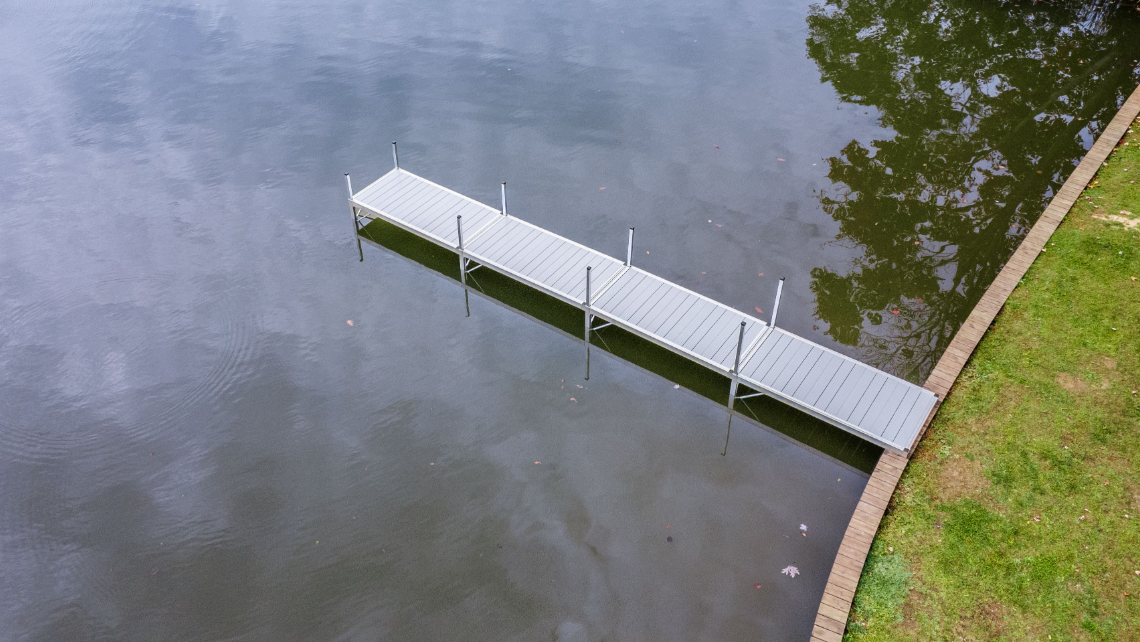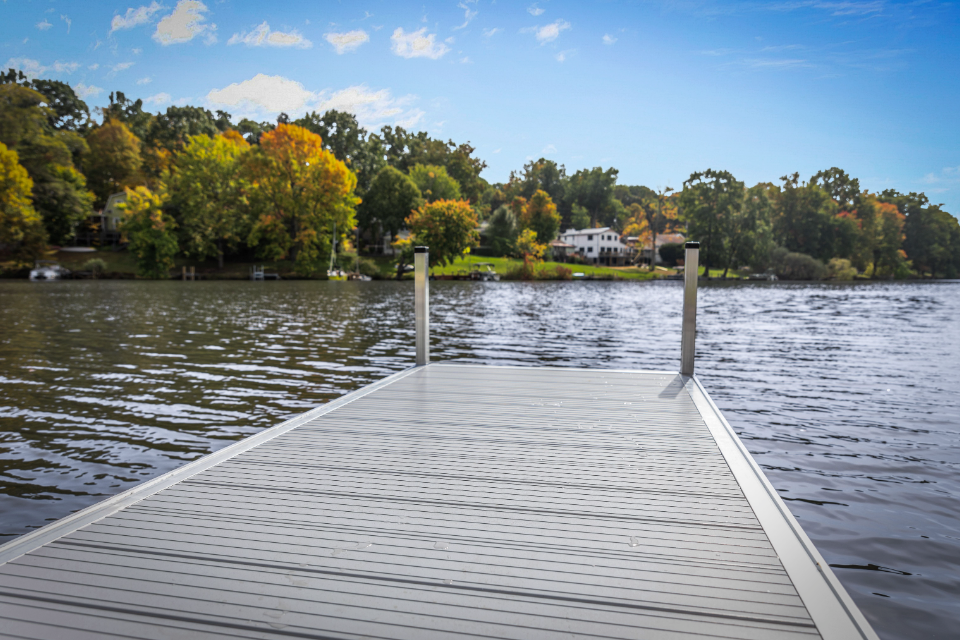Lake docks serve more than the purpose of extending into the water. They play a role in lakeside properties by offering access, opportunities and a chance to connect with nature. However, to ensure their durability and safety, regular maintenance is essential. This article aims to guide you through the fundamentals of maintaining your lake dock emphasizing the importance of inspections, addressing issues, offering tips and knowing when professional services may be needed. Let's delve into the specifics so that you can keep your lake dock in good condition all year round.
Understanding the Basics of Lake Dock Maintenance
Maintaining a lake dock requires a mix of actions, regular inspections and timely repairs. This process aims to keep the dock strong, secure and visually appealing. Basic maintenance tasks involve cleaning, examining for problems and promptly addressing any indications of wear or damage.
The Role of Regular Inspections:
Regularly inspecting lake docks is vital for their maintenance. These routine checks play a role in identifying any issues, preventing them from escalating into significant problems, and ensuring the long lasting durability of the dock. It's important to give priority to inspecting for signs of wear and damage in areas such as support posts, decking and any attached accessories.
Identifying Common Problems:
Lake dock owners commonly face issues such as wood rot, rust, and algae buildup. Decay in wood can weaken its structure, and rust can have an impact on metal parts. Additionally, the accumulation of algae is independent of the appearance. It also poses a risk of creating a slippery surface. It is essential to tackle these issues in order to avoid any harm.
Seasonal Maintenance Tips
Understanding that maintenance needs vary with seasons is crucial for effective dock upkeep. Keeping your dock in condition requires paying attention to each season's challenges.
Spring Maintenance Checklist:
Now that winter is coming to an end it's an opportunity to evaluate the impact it had on your dock. Begin by thoroughly cleaning the dock surface and inspecting for any winter-induced damage. Look for loose boards, nails, or any signs of rot. Replace or repair damaged sections promptly. Check the anchoring system and ensure it's secure after winter storms. Additionally, inspect safety features like handrails and ladders to guarantee they're stable and in good condition.
Summer Upkeep Practices:
As summer approaches you can expect activity, on your dock. To maintain a dock and prevent the build up of algae and debris it is crucial to clean it. Applying a sealant can help shield the wood from the suns rays and for added safety you might want to consider using slip coatings. Take a moment to inspect the lights and outlets for any indications of damage or corrosion. Additionally ensure that there is drainage in place to prevent water damage and consider investing in dock bumpers as a precaution, against boat collisions.
Autumn Preparations for Your Dock:
As we move towards autumn it's important to get your dock ready, for the months. Start by conducting an examination to spot any structural problems that may have occurred during the summer season. Take action to address these issues and avoid any damages. Remove any unnecessary accessories and secure loose items that could be damaged by winter storms. Consider adding protective covers to critical components to shield them from harsh weather conditions.
Winterizing Your Lake Dock:
Winter demands special attention to safeguard your dock from freezing temperatures and ice. Begin by removing detachable components such as ladders and furniture to prevent ice damage. Install ice guards to minimize the impact of freezing water. Inspect and secure the anchoring system to withstand winter storms. Regularly remove snow to prevent excess weight on the dock. If applicable, consider using a de-icer to prevent the formation of ice around the dock.
DIY Maintenance Vs. Professional Services
It's important to take care of your lake dock to ensure it lasts long and remains safe. Some maintenance tasks can be done on your own. Some aspects require the skills of professionals. Knowing when to handle maintenance yourself and when to seek expert help is crucial for the health of your dock.
Common DIY Maintenance Tasks:
- Cleaning and Inspection: Make sure to clean your dock to avoid the buildup of debris, algae and mold. Take a look, for any boards, nails or signs of wear during the inspection.
- Applying Sealant: Adding a sealant, to the surface can be easily done as a do it yourself project. It helps guard against sun damage and extends the life of the dock.
- Painting and Staining: Give your dock an upgrade. Shield it from weathering by adding a coat of paint or stain, for an enhanced appearance. This can be done by most dock owners with basic painting skills.
- Electrical Checks: When it comes to checks, individuals who enjoy DIY projects can typically handle tasks such, as inspecting and replacing bulbs examining wiring for any visible signs of damage and making sure that all electrical components are functioning correctly.
When to Hire a Professional:
When it comes to problems, like rot, severe warping or a compromised foundation it's important to reach out to professionals for help. These types of repairs require expertise to ensure that the dock remains stable and safe.
While you can handle checks yourself it's best to leave more complex electrical issues like rewiring or fixing faulty circuits to licensed electricians. This will help prevent any safety hazards.
If your dock relies on piles for support, it's recommended that professionals handle any installation or replacement tasks. They have the equipment and expertise to ensure these tasks are done correctly.
For tasks involving inspections, repairs or adjustments, hiring professionals with construction experience is essential. This ensures both safety and effectiveness.
Long-term Care and Upgrades:
Regular maintenance checks play a role in identifying signs of wear and tear, damages or structural issues. It is advisable to carry out these inspections. Taking care of these issues promptly by making repairs can prevent damage and make your dock last longer. Applying coatings such as sealants, paints, or stains regularly acts as a shield against UV rays, water damage and biological threats. This greatly improves the durability of the dock. Ensuring the anchoring system is secure through periodic checks is also essential as a preventive measure against damage during storms and heavy winds.
Upgrading Your Dock:
Consider composite decking for durability and resistance to weathering, rot, and insects, requiring less maintenance than traditional wood. Consider using aluminium frames of ones to create a more durable and resistant structure, particularly in freshwater settings. Choose powered lighting for friendly illumination, reducing the need for electricity and improving nighttime safety. Additionally, consider investing in components that allow for upgrades and repairs, enabling specific sections of the dock to be replaced or upgraded without having to dismantle the entire structure.
Preventative Measures for Dock Longevity:
Keep your dock clean on a regular basis to get rid of debris, algae, and other impurities. This will prevent moisture buildup. Reduce the chances of decay.
When there are storms or during the winter months, make sure to use covers that're resistant to weather conditions for important parts of your dock.
Take measures to deter pests like insects and rodents. Termites and other pests can cause damage to structures over time.
It's an idea to schedule inspections once a year to assess the overall condition of your dock. Professionals can spot issues that may not be noticeable, during inspections.
Conclusion on maintaining your lake dock year round:
To sum up the points discussed in the article the conclusion emphasizes the significance of maintaining lake docks, for both longevity and safety. It serves as a reminder that a kept dock not enhances the overall appearance of the property but also guarantees a secure and pleasant experience, for everyone involved.
In summary proper lake dock maintenance involves a combination of inspections, seasonal upkeep and thoughtful planning. By understanding the basics identifying issues and following the provided suggestions owners can ensure that their docks remain sturdy over time. Whether opting for a do it yourself approach or seeking help the key is to prioritize maintenance efforts in order to preserve the docks optimal condition and provide a safe and enjoyable space for many years to come.





